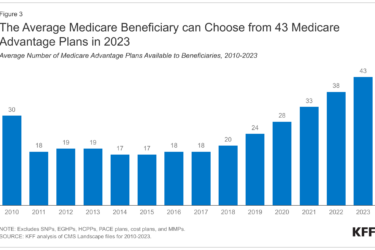
Accountable Care Organizations, which were created by the Affordable Care Act as one way to improve the delivery of health care, may become an important want to reduce the wide variation in end-of-life (EOL) care, two academic researchers suggest in a recent Health Affairs blog post.
As we have pointed out repeatedly, while the political and fiscal battles have been over the coverage provisions in the ACA, much of the law also contains incentives and programs to improve both care quality and efficiency. And there are ample opportunities to do so toward the end of life, including in hospice.
Right now there are not great incentives for consistent and appropriate care at the end of life. A change in the Medicare hospice payment system in 2016 (required under another ACA provision) was only a partial solution.
Julia Driessen, Ph.D., an assistant professor of health policy at the University of Pittsburgh, and Turner West, M.P.H., M.T.S., the director of education and the director of the Palliative Care Leadership Center at Bluegrass Care Navigators, suggest in their Health Affairs post that ACOs may be part of a better solution. ACOS have different incentives than fee-for-service Medicare because the level of payment takes quality measures and savings into account. ACOs do include hospice care. That’s unlike Medicare Advantage, where there’s a carve-out so that patients receive hospice care but not via their MA plan. The authors acknowledge that there’s been little research yet on how ACOs approach end of life, but note that “the incentives built into the ACO model may yield three strategic and innovative approaches to EOL care.”
A little background: Before the ACA, and into today, there has been much variation in who uses hospice care, how long they use it, and what kind of care they receive. Hospice quality was rated well in CMS’s first-ever hospice report card recently, but that does not address the full array of EOL needs and wide variation in stays and utilization. The median hospice stay is 17 days – but the average stay is 72 days. Many longer-stay patients have dementia or chronic conditions like COPD.
However, in two types of Medicare ACOs – the Pioneer Shared Savings Program (SSP) and Next Generation – hospice care is part of the package of costs for which the ACO is responsible. Remember, ACOs have to control costs but also have to account for quality. It makes sense for them to figure out the right match between hospice (and palliative care) and patient.
The authors of the Health Affairs post see three scenarios. First, ACOs will have an incentive to refer patients to hospice (though not force them into hospice) and doctors and other providers will have an incentive to learn more about quality hospices in their community. That, in turn, should pressure lower-quality hospices to up their game.
Second, ACOs have incentives to increase the use of palliative care, before or alongside hospice. Patients can get specialized palliative care if they are seriously ill – though not necessarily at “end of life” – alongside treatments such as chemotherapy. There’s more and more evidence, the authors note, that “palliative care teams improve clinical outcomes while reducing unnecessary, unwanted, and potentially harmful medical care for seriously ill individuals…The business case for palliative care is becoming increasingly clear, with consistent evidence of palliative care associated with reductions in hospitalizations, emergency department visits, and costs.” ACOs, in fact, may be able to scale community-based palliative care in a way that the fee-for-service system has not.
Third, the hospice benefit is pretty much a one-size-fits-all model – whether it’s a cancer patient who has a few days to live or a COPD patient who may have months. As ACOs use more hospice care, it may “inspire an unpacking of the off-the-shelf hospice benefit, with hospice reimagined as a suite of services tailored to beneficiary needs.”
This won’t happen without some policy changes, Driessen and West suggest. The quality indicators for most ACO models do not explicitly address EOL care, though they do address unnecessary hospital readmissions which is related but not identical. The researchers argue that as ACOS evolve, more thought must be given to measuring quality for patients with serious or terminal illness.









